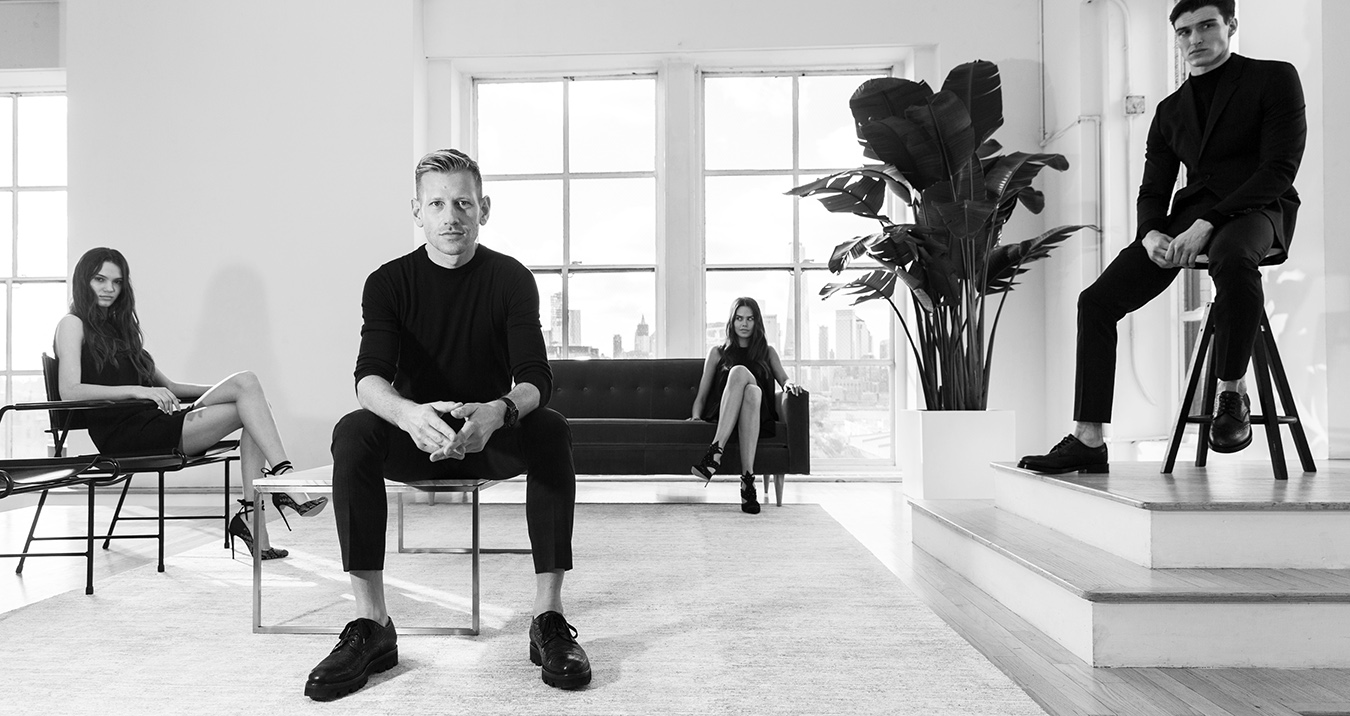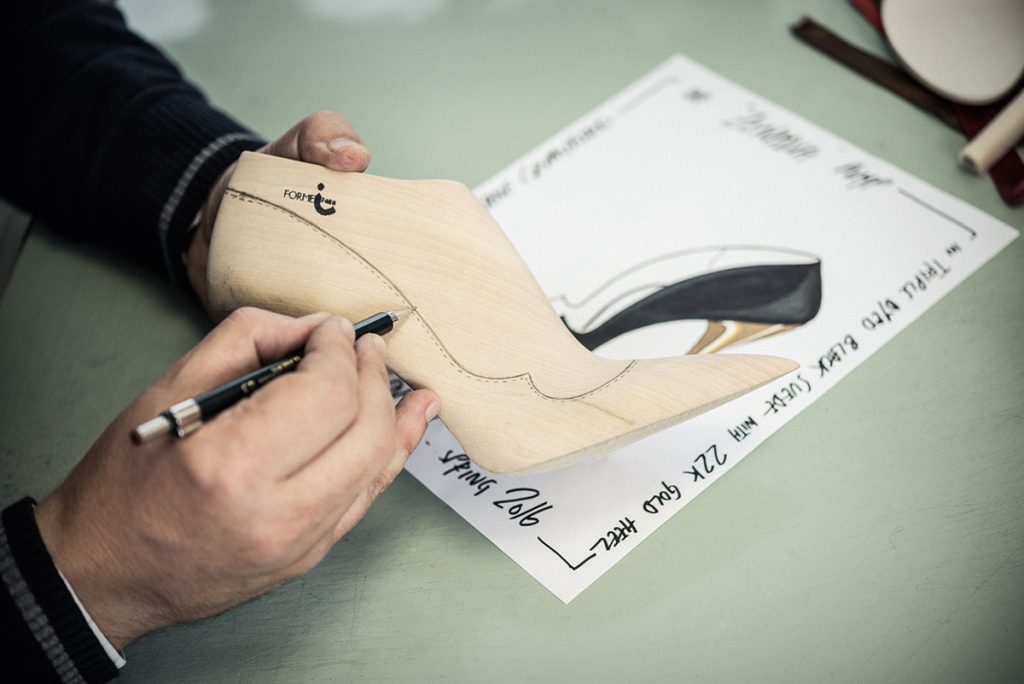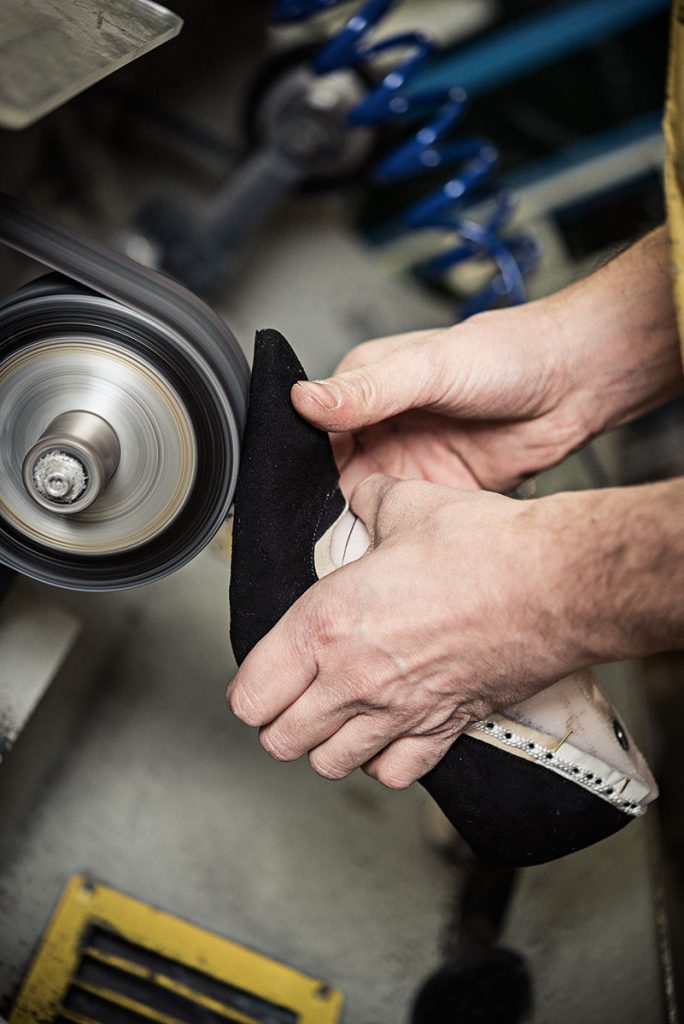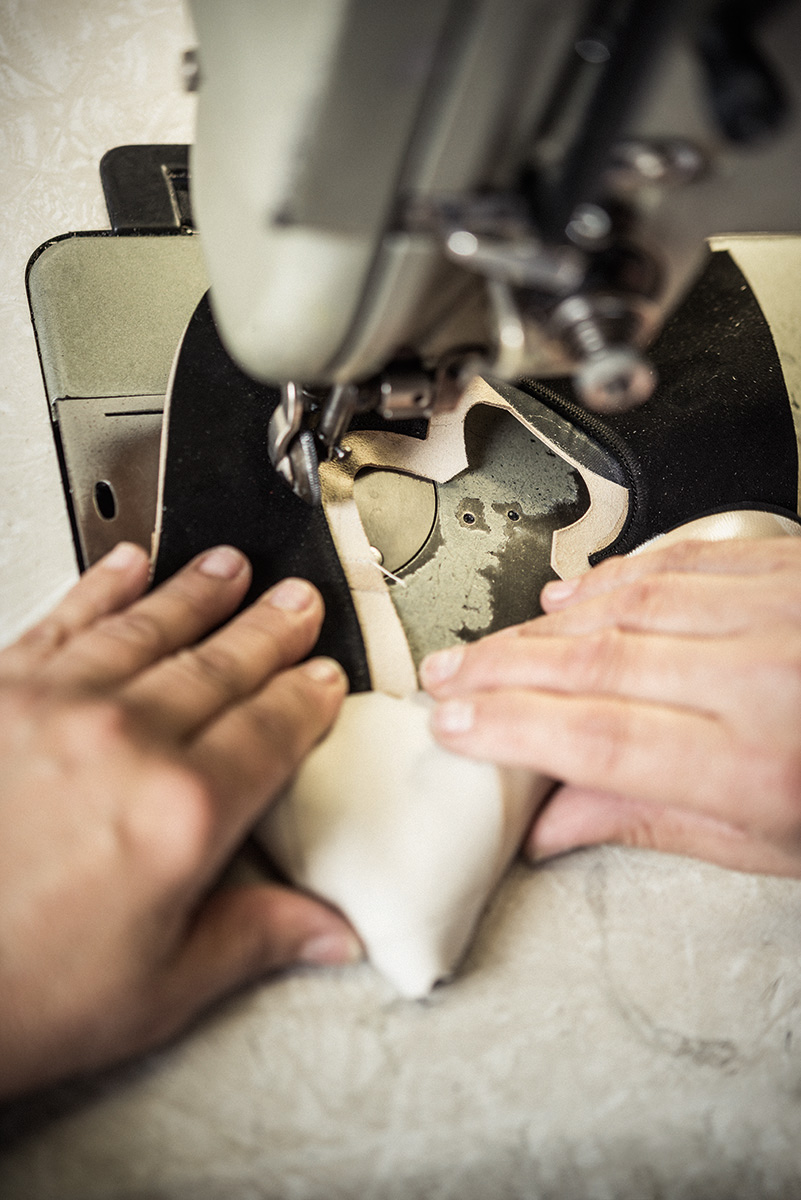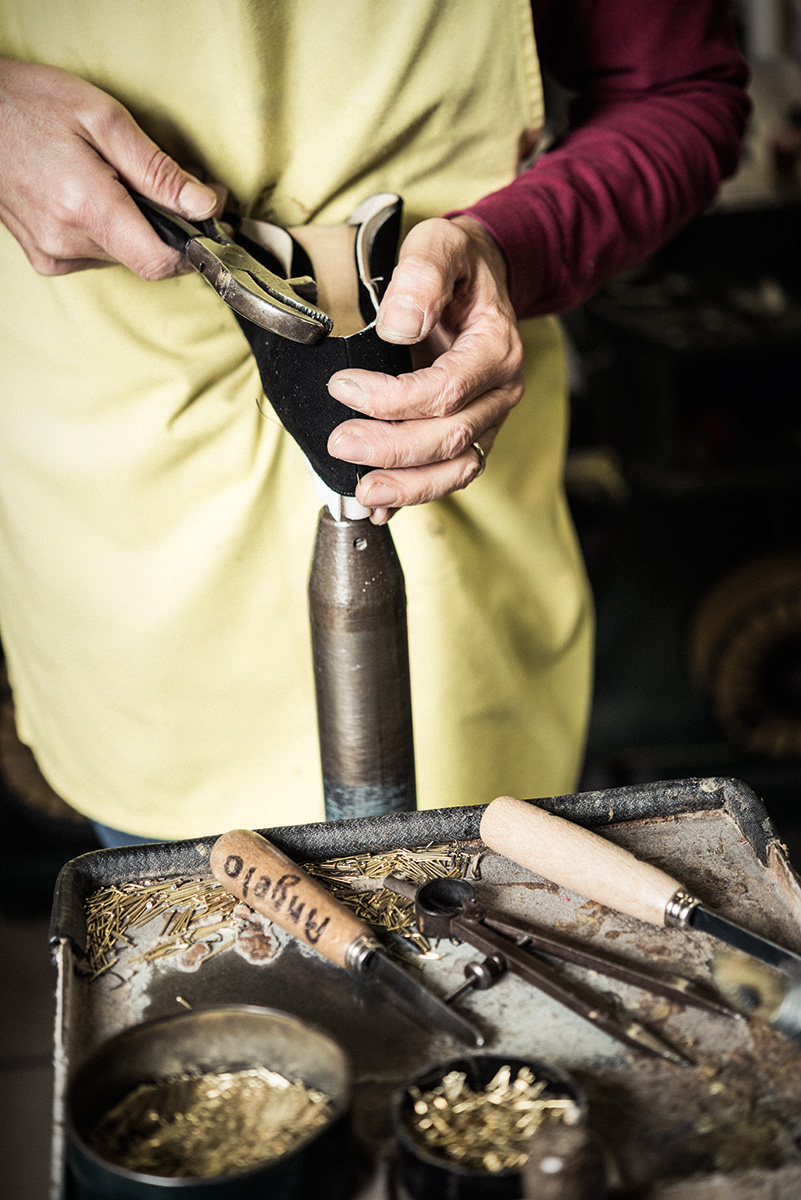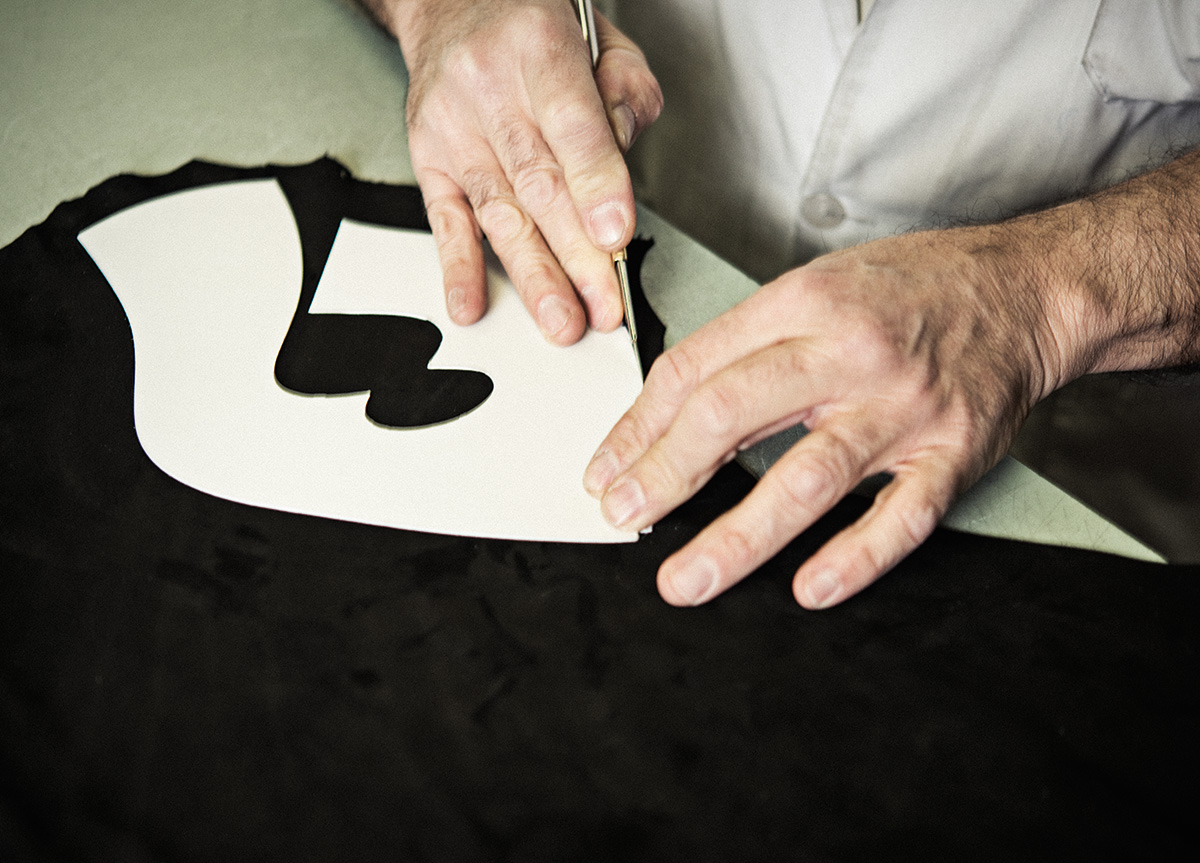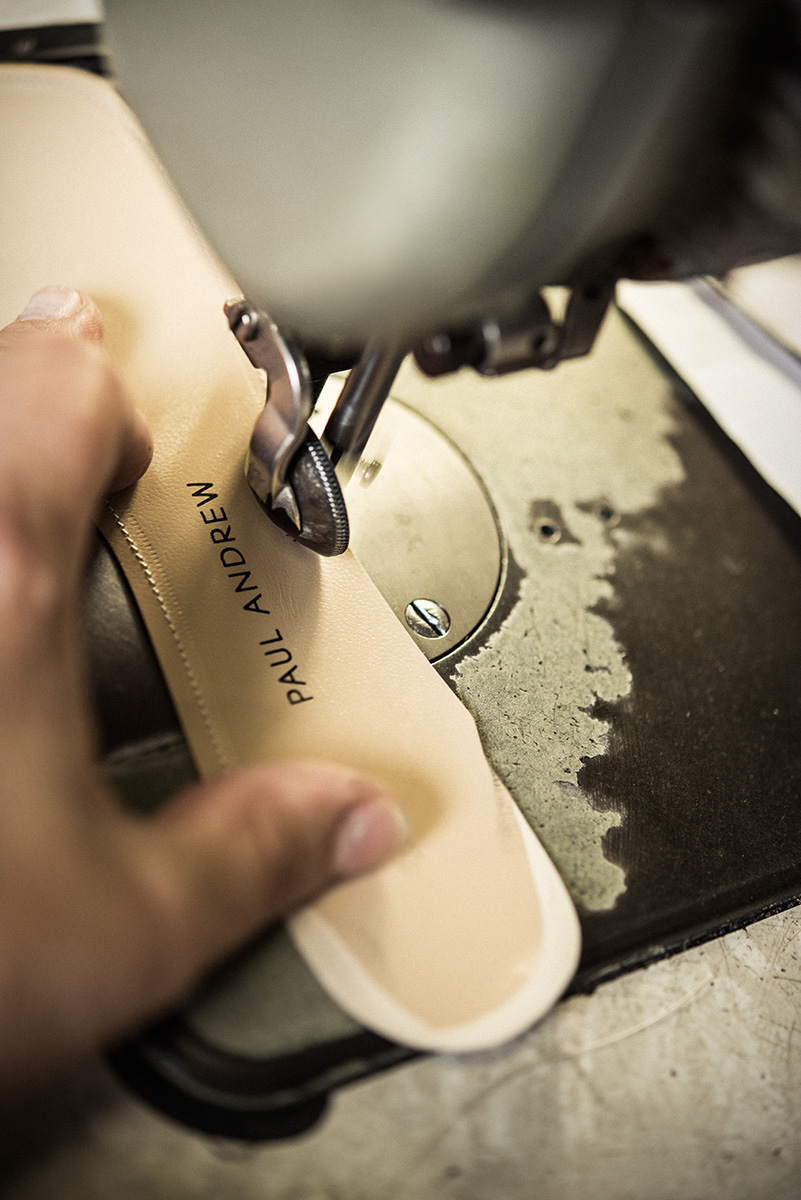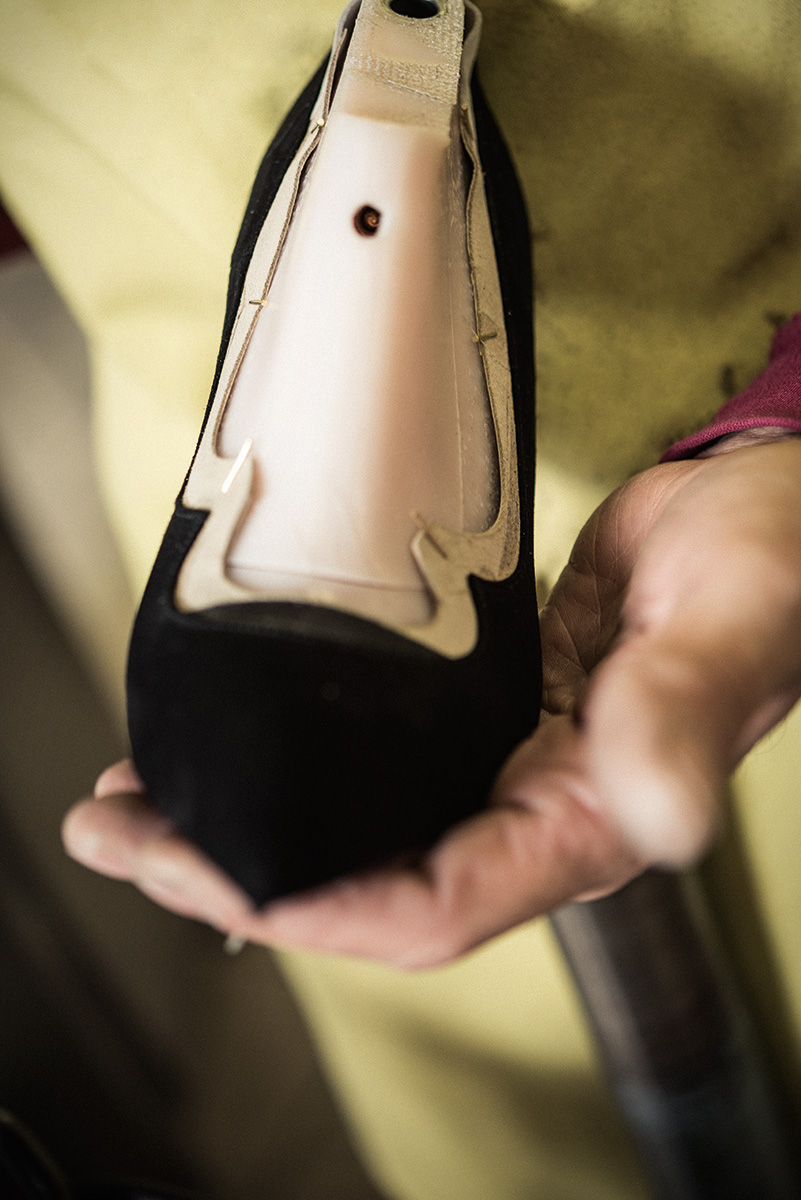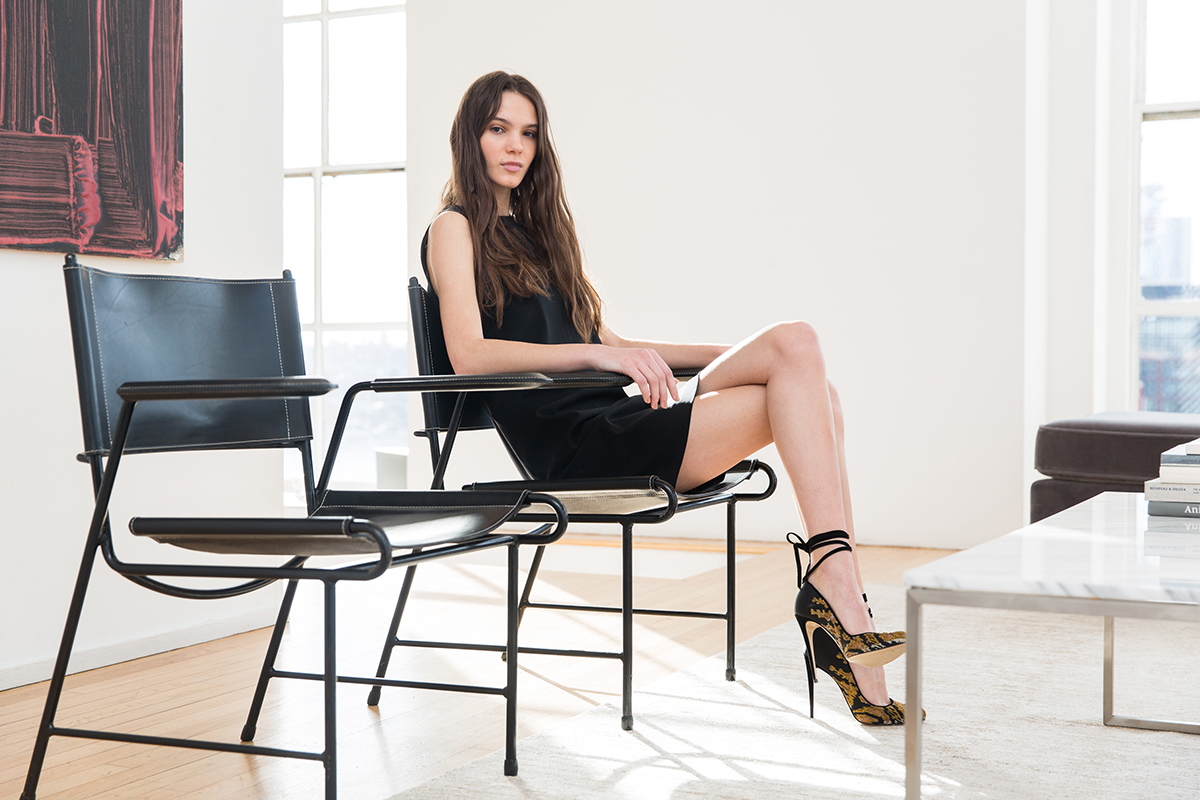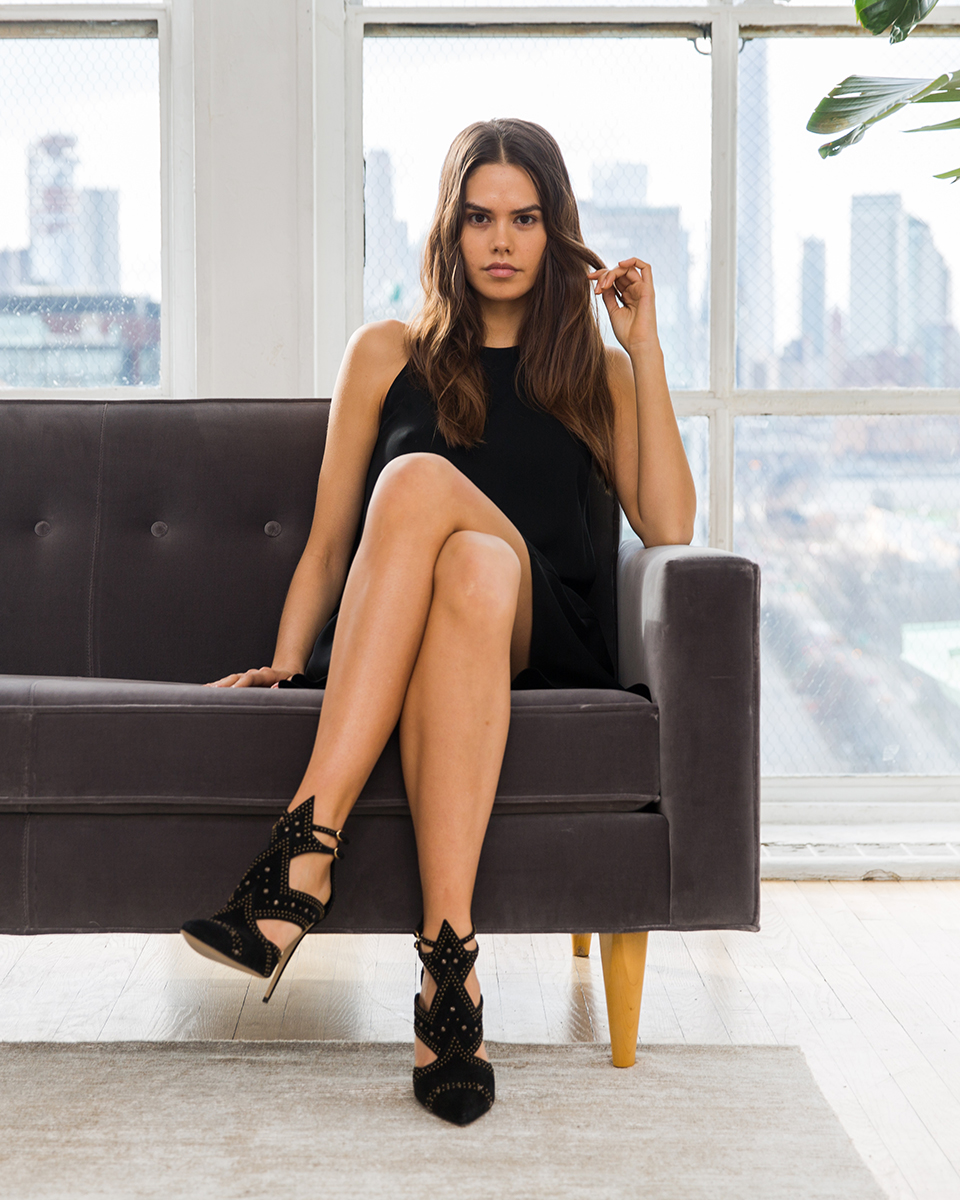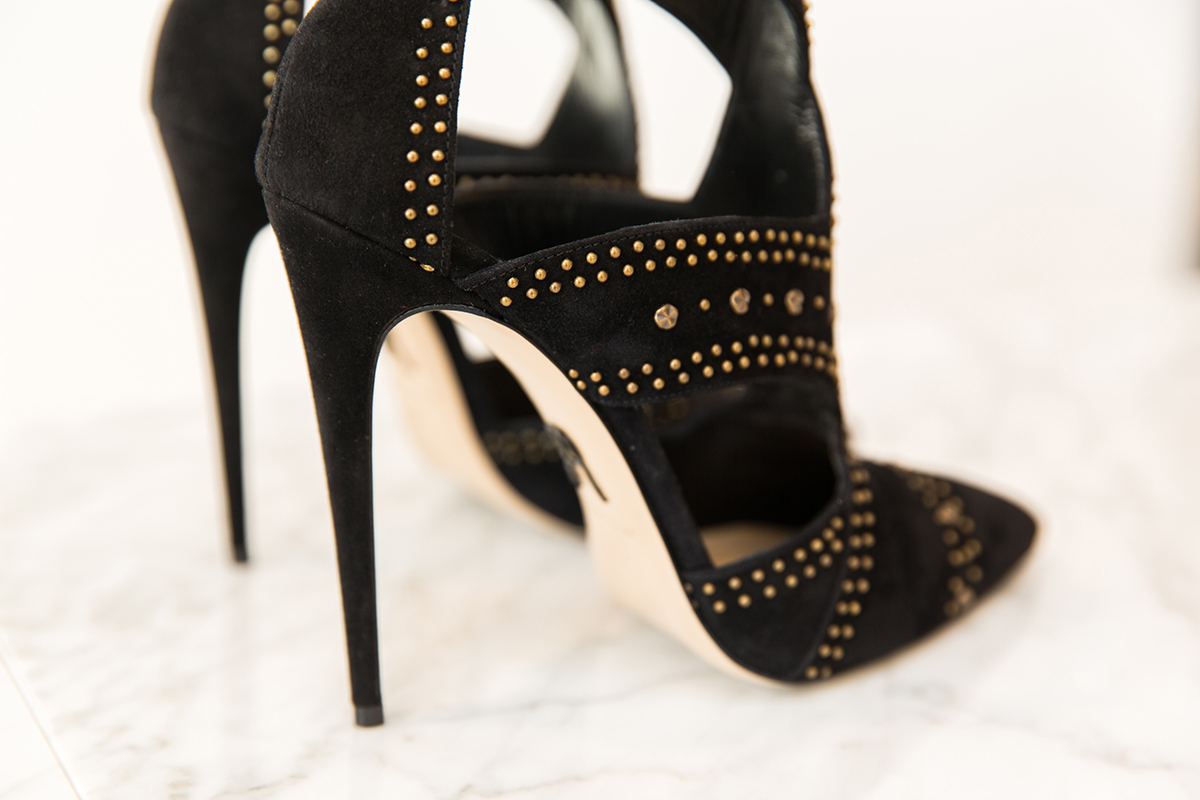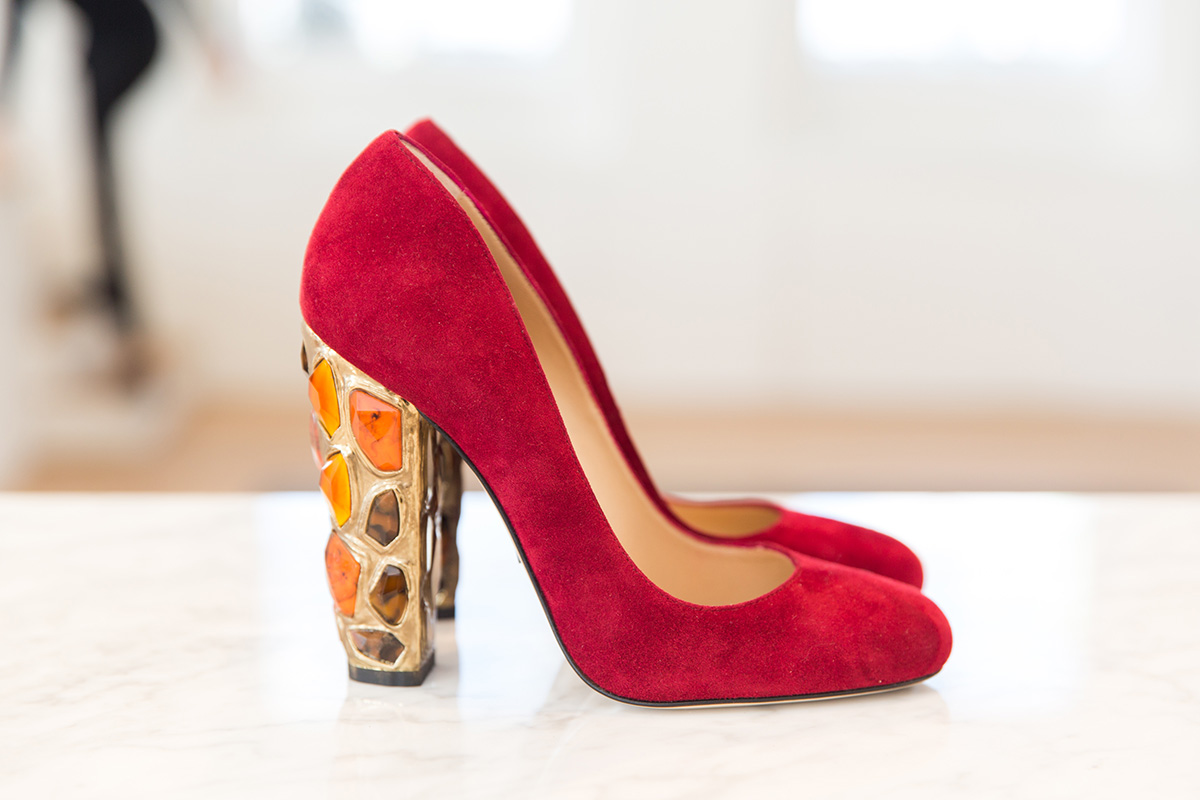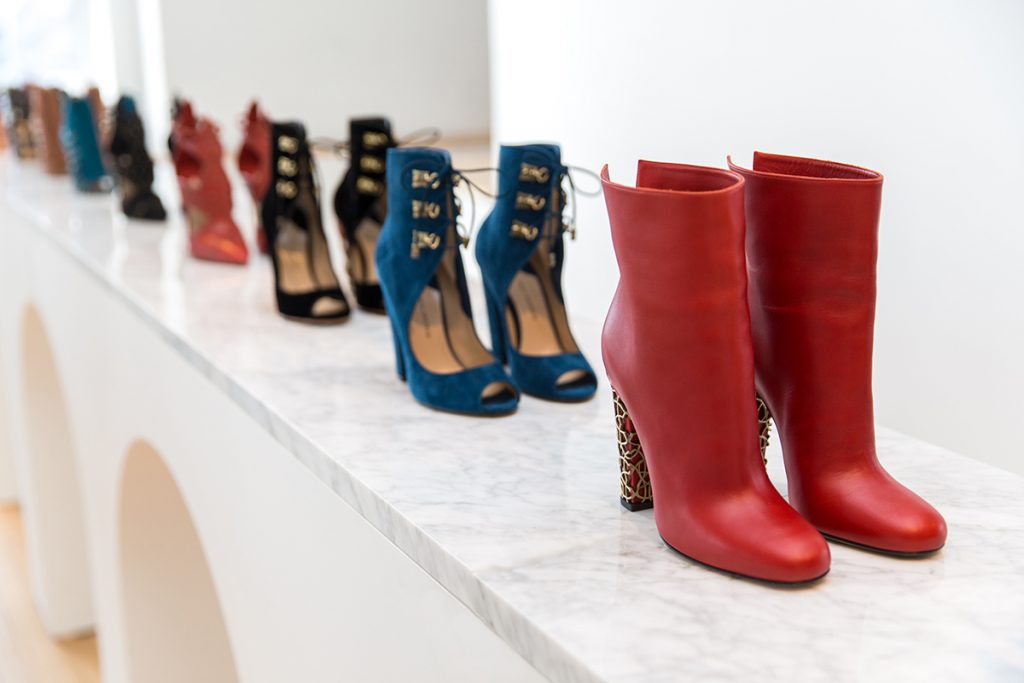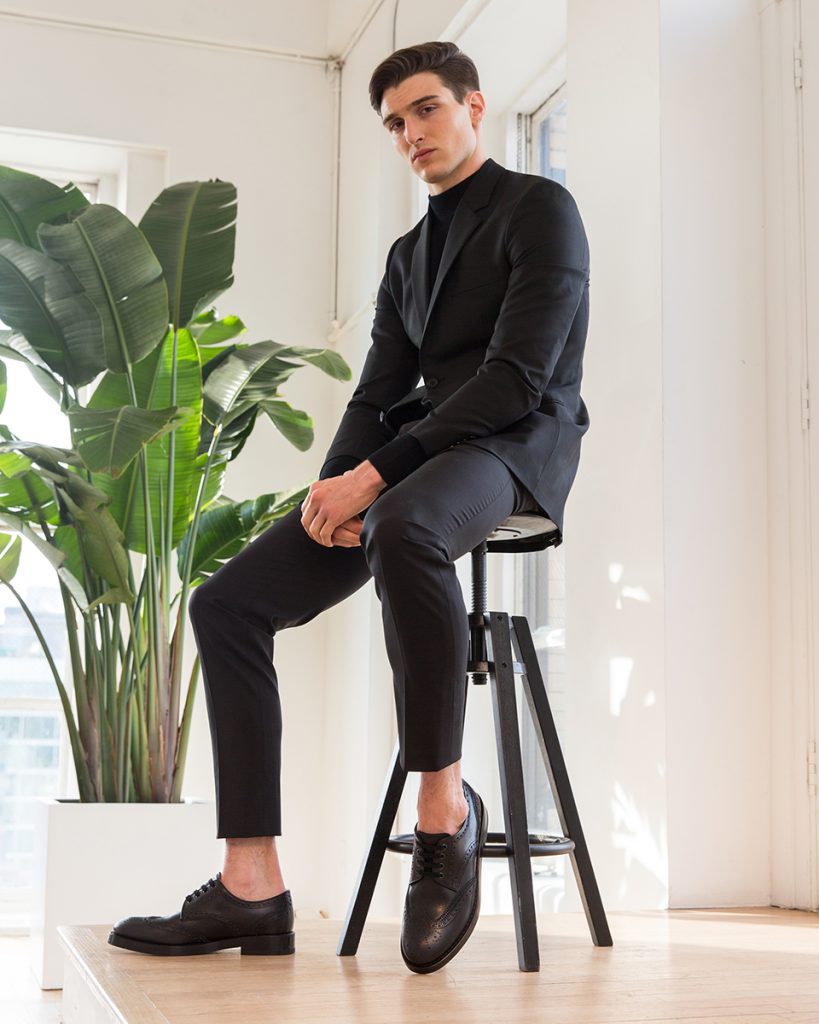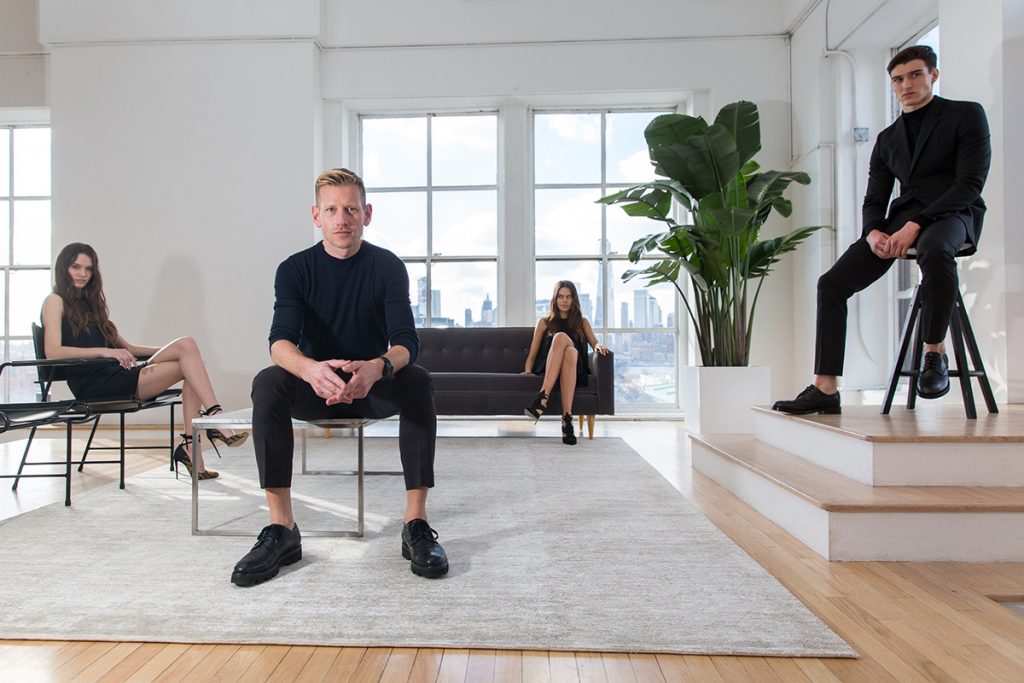Contrary to popular opinion, there is no such feat as an overnight success in fashion. And no one knows this better than accessory designer PAUL ANDREW who spent over a decade working under the tutelage of design greats Calvin Klein and Donna Karan, before launching his eponymous collection. Those dues have paid off, earning him name recognition after just three years and with a bevy of global retail support from the likes of Barneys New York, Colette, Lane Crawford, and Harvey Nichols. To boot the designer has just received a CFDA AWARD NOMINATION for the 2nd year in a row. The Impression sat with Paul to chat about his journey, the value of mentorship, NY’s designer wolf-pack, Prince Charles, and what he learned along the way.
BY KENNETH RICHARD
Paul, congratulations on the CFDA Award nomination. Two years in a row is pretty spectacular. Really appreciate you taking the time.
Thank you. Been reading you for a while now.
Please, my pleasure. Know you are traveling soon. Where are you off to?
Oh, God, I’m on a plane every five minutes. I am actually leaving for Milan this afternoon to visit the factory.
Was just there. Really love the lakes. So amazing in Europe how many spectacular places there are just an hour outside of a city.
So true, in fact my family lives just an hour outside of London and it is really the countryside. I grew up in a town very close to the Windsor Castle. My father was the upholster to the queen actually.
What does that mean, upholster to the queen? Does she call asking for slip-covers?
(Laughs) I don’t know if there are any slip-covers at Windsor Castle! The tradition of upholstery is not just covering furniture. It was also working on draping of the fabrics on the four-posts of the beds. And so many of the walls are upholstered in fabric. And it also includes carpeting. I mean, it’s constantly being redone in that house.
Did you ever go with him to work?
I did when I was a young child. I think only five or six. I have these images in my mind of what it was like. But it just shows up weirdly as a staircase, which I remember flying down and knocking someone over. And then that night, my father reprimanding me because it was Prince Charles.
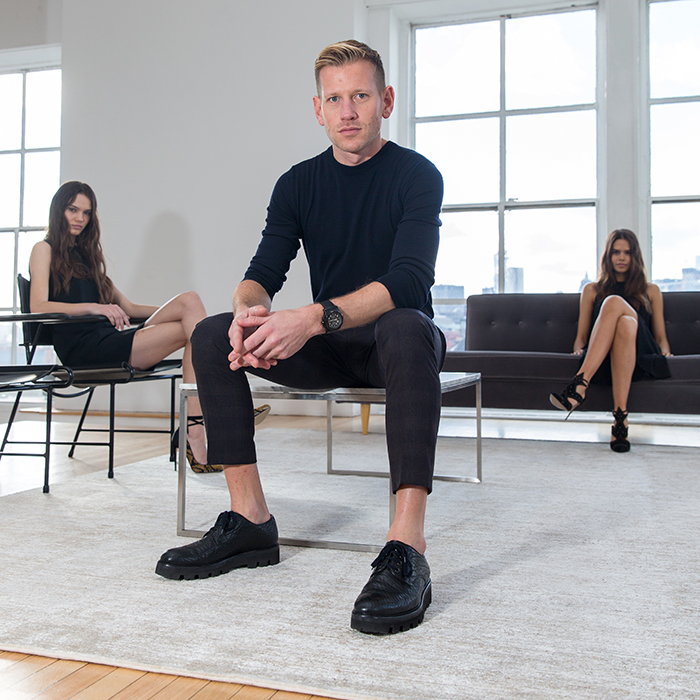
Hysterical. I am sure they would love to have you back.
With a call from the queen, I could get into that.
Did your mom work as well?
Well my mother did something quite different. At that time, she was working for Commodore Computers. She was on the technology side whereas my father was an artisan. Both of them led to what I do.
I really wanted to be an architect as a kid. I would help my father move furniture into the castle on the weekends and he would give me a bit of pocket money from which I would buy copies of British Vogue every month. So that is how I discovered fashion and shoe design is an amazing combination of all of my interests because the way that you build and create a shoe it is very much like how one would create a building. The way that you carve a heel or a last and then cut the pattern, it is very architectural. I think the majority of the sneaker designers at Nike and Adidas are in fact actually architects.
It’d be great to see you try your hand at a pair of sneakers but you have been designing in some new territory, launching men’s recently. Had you designed men’s before?
Yeah I have, at my first job with Alexander McQueen and later at Calvin Klein. I moved to the US in ’99 and then I worked with Narciso Rodriguez for a bit and with Calvin Klein for 3 years designing men’s and women’s shoes for him.
I had the great privilege of working with Calvin when he was still around and I had worked a little bit in the studio with Francisco and Italo who are both incredible designers in their own right.
Calvin would come into the studio at the beginning of the season and set an inspiration and explain the silhouettes. He would never falter or vary and change and it was amazing to work with someone with such a creative brand identity. It had to be the perfect representation of his brand and his advertising reflected that precision – he was never afraid to shake things up. I still think about the amazing ads with Mark Wahlberg and Kate Moss, it was just so well done. I’m pleased to see they are basically following his path with their ads now, with Justin Bieber and Kendall Jenner.
When I was at Calvin it was such a huge infrastructure and there were so many talented great people working there – I had come from McQueen and Narciso, which were much smaller companies, so that machine was a totally new experience. Calvin was and is a huge corporation where people have really specialized jobs. For example, they have people who just choose leathers or fabrics. It was amazing for me to see fashion as a corporation and not just something that you would do to simply make some clothes. They wanted to make money and it was a true business. I learned so much from my time at Calvin Klein but most of all I learned about merchandising the line. While it was mostly about designing staggeringly high heels for runway shoes, I learned the importance of merchandising the collection, so that there were wearable heel heights and versions of the runway silhouettes that translated to every-day life.
Sounds like you learned a good deal while working with some great talents. Where did you go after Calvin?
Donna Karan. I worked there for the better part of a decade. Whereas Calvin was very focused on branding and marketing and had a very clear image for the company, not that Donna didn’t, but for Donna it was much more about the woman herself and a real focus on organic creation of a community of clients and shoppers who believed in the brand and understood that it stood for something.
My experience with Donna was less influenced by sexy advertising and more focused on great design and fit. She wouldn’t put anything out in the market if it wasn’t going to perform.
Donna had a lot of influence on what I do for my own brand now. When I launched I did this crazy survey with women all over the world to establish the fit that is perfect for our moment because shoes have been made for generations according to measurements that were established generations ago. No one has thought to change them and now that people are doing sports and yoga, and wearing sneakers everyday their feet have really changed. The way that I construct the shoes is totally different than anyone else and I think that Donna had a real influence on that.
How did you know it was the right time to launch your own label?
It was something I always wanted to do but it hadn’t really felt like the right moment and throughout my time working with other designers, which was about fifteen years, I was continually learning and knew I wasn’t ready to launch my own brand. During that time, it was so great. I was travelling to Italy at least once a month and working with these great artisans in shoes and learning the craft of shoe making.
But 3 ½ years ago I saw an opportunity. The market was covered with bold platforms and stand-with-me high-heeled shoes, which weren’t me. I typically preferred single soled, elegant, sleek, refined silhouettes and knew they could make a comeback. So I bit the bullet and I did it. I handed in my notice at Donna Karan and I started the line and thank goodness it worked out.
Good sense of timing always helps. On that timing front you ended up very quickly in front of the CFDA and Vogue with the Vogue Fashion Fund in 2014. Can you share with me a little bit about how that came about?
Oh sure. You know during my time at Donna I was lucky that I was obliged to present the shoes and bag collections to editors in the showrooms and developed great relationships with a number of them. Buyers too which made it much easier for me in launching my own brand. I am close to the editors at Vogue and it was on their prompting that I applied for the CFDA Vogue Fashion Fund and then of course got through to the final process and fortunately won the award which really had such a major impact on the business.
How so?
Well I think just going through that process it was really the first time I was seeing the public face of my brand. That told me a lot about the importance of being out there and leading customers, and editors, and buyers, and saying the right things about your products. That was really a learning curve and it really did impact the business. We saw a 50% increase in sales in that year following the win and it had something to do with the press that came along with that, winning that award.
And shortly after you were nominated for the 2015 Swarovski Award Talent in Accessories and again here for 2016. Congratulations, two years running. What have you taken away from that experience?
I grew up and was trained in London and it’s such a great community of fashion designers there but I have to say that I feel so fortunate to be working in New York and in the United States because there is such a strong community of emerging designers and I really feel such support from all of them. There is a real camaraderie here and we all hang out together which has led to a lot of collaborations. I design shoes for eleven brands at the moment.
Eleven! Ok share with us some of those please.
So I currently design for Rosie Assoulin, Victor Alfaro, Tanya Taylor, Jonathan Simkhai, and in London with Duro and Alexander Lewis and then I also designed shoes for Vera Wang and DVF for her runway and I’m also about to start with Narciso again. So it is a lot of different brands.
How wonderful to work with Narciso again.
It has been really great after almost a 15-year hiatus.
So how do you feel your success in the business has been different from others?
In terms of my successes, I think that they had a tremendous amount to do with the relationships I had forged when I was working at Narciso Rodriguez, Calvin Klein and Donna Karan. Many designers come out of the gate with tremendous talent, but were never tasked with meeting with and explaining the collection to press and retailers. Part of my responsibility at Donna Karan specifically was working with these people, which made calling them my first season much easier. It’s not easy for a new brand to get the market director of Vanity Fair and Harper’s Bazaar and the buyers from Barneys, Bergdorf’s and Saks to pay attention! It was incredibly heartening to see the faces of those who showed up those first few seasons, their support is one of the biggest components to any success I can claim now.
It’s nice to hear you express how important those people are during the early stages as industry support is important at almost every stage. What stage are you at now in terms of growing the business?
We are in a building and delegating phase.
[quote text_size=”small”]
Probably one of the biggest challenges of starting a business is relinquishing control. As is quite common with designers, it’s really difficult for me to delegate the details. But at the pace the company is growing, there is a level of release that I’ve had to make – particularly on the business end.
I’m incredibly lucky to have a wonderful team in place, including my President, Laura Kaplan, whose role is ever-expanding. We’re reaching a tipping point where I simply can’t have a hand in as many details as I once did, which is bitter sweet: I obviously am so proud of how far we’ve come in a short time, but is also really difficult for me to not be intimately involved in the minutiae.
And how about changes on the marketing and sale front?
Well, when we first started it was about the quantity of accounts, which of course is incredibly important. We’re now looking at the depth of each of those accounts and leveraging every asset we have to build their Paul Andrew business. But these larger accounts are not only in the US, some of my biggest accounts are in Asia, Europe and the Middle East, where brand awareness is more limited. So a large part of building name recognition and excitement in those locations is my being on the road almost every week and meeting the clients of these stores, meeting the sales associates, and getting a better understanding of what is working in their markets.
It’s no secret that this industry is globalizing at an extraordinary rate, and while it’s an exhausting element of my job, it’s also proven invaluable to my company’s growth. For stores, specifically in Asia, I have seen almost overnight changes in sell-throughs after I’ve been to a store – partly because of the clients, but largely because the sales associates now feel a connection to the brand and are able to sell it in an authentic way.
You’re independent too right?
Yes, it has been really important for me. Having worked with a lot of different houses, many of whom are owned by big conglomerates, and of course I see the value in that, but it was important for me to maintain a certain independence. So that is the reason I’m doing it this way.
The financial side of things has been the biggest learning curve and especially dealing with the cash flow issues, there is juggling and like in any business it’s a major challenge sometimes.
What do you attribute the success of being able to self-finance to?
Well a lot of it goes back to the product. One has to have the right product at the right moment. I have been really lucky that I introduced a couple of silhouettes that resonated with the market pretty quickly.
We have the pump called the Zenadia and the slingback called the Rhea that now are probably combined about 65% of my business. So that really helped in terms of leveraging prices at the factory and demanding certain delivery dates which enabled me to create this replenishment system with the factory.
I make time to be in the factory and it is really important for me to touch all of these shoes as they go along and handcraft every pattern and every heel and make sure that every stitch is perfect so that when the shoe comes to the customer they have an appeal that is unlike any other shoe that they will put on.
Once the shoes are in store, I have been travelling tremendously to make personal appearances, which I feel designers don’t do so much anymore. I have been travelling non-stop in the past two months and was in three continents in one week doing personal appearances. This year I was in Japan, China, Indonesia, all over Europe and I have more trips planned to the Middle East and Asia in the next few months. It is just really important for me to be out there meeting the customers and understanding their needs and then addressing those. Meeting clients and drawing in new clients one person at a time takes time but it is about an experience now, you have to bring something else to the table. Those are the couple of things that I think were pretty helpful for the business.
Do you find yourself thinking of a specific person periodically as you are designing?
Not especially. I don’t really like the term lifestyle brand but I do like the idea that the brand isn’t for just one singular person. I was just at Bergdorf Goodman being very incognito on the shoe floor. There was a family of three women; a grandmother, mother and a daughter that came into the store and sort of came to my assortment of shoes. All of them walked away with a pair of shoes from my collection and it really struck me, the idea that my brand can resonate with three generations. I mean I loved that idea. It’s not really about one specific woman for me.
So let us talk a little bit about marketing. Know it has only been three years and three years in business does not a media budget traditionally make. Is that something you aspire and dream about having?
Sure, eventually paid marketing is an aspect that I would like to bring to the business but right now I am quite heavily relying on social media and editorial coverage and trying to get shoes on celebrities because that really does have a major impact. I have someone on my team who is dedicated full time to the social media and it is the closest way to get to people and we really see that. We get a lot of traffic coming from Pinterest and Facebook to PaulAndrew.com. So I am really working with social media.
[quote text_size=”small”]
What I think is so great about social is that we can really interact with the customer. You can speak to the customers especially through Instagram. They ask you questions and you can respond and you can see in their comments what they like about the brand and a specific shoe or color it can inspire me to do go out and do other things.
Noticed your Instagram account is product focused rather than a diary of your life. Is that how you approach it?
For me I approach it as advertising and this is how I promote my brand in the outside world and now I have around 90,000 followers on it and it is significant amount of people watching what we are doing. I like the idea that people can go from there and find the shoes online or in a store, so it is definitely a form of advertising.
Web is obviously important for you too.
We just re-launched PaulAndrew.com, which we’re really happy about and I plan to launch ecommerce by the end of the year. Online sales, I think for every brand, is just increasing season after season and it is so interesting to see how the consumer shops these days. The dot-com business is really important so looking forward to making that work in the next few months.
Sounds like you have already got the infrastructure with regards to inventory management to be able to replenish.
Well upon winning the fashion fund one of the great things that came from that is mentorship with Tory Burch and she and her team have been really, really helpful in putting us in touch with the right partners in order to do that in the right way because you can’t do it the wrong way. If you mess it up then you are done. So yeah, I think we are quite confident about how we are going to do it and launching platform.
Are there any other categories you are looking forward to tackling?
Well as you know I launched men’s shoes for fall and that was a really exciting endeavor. I have a passion for other categories and would love to extend into handbags and leather goods. Plus I have been collecting vintage eyewear for fifteen years and so I love the idea that I might eventually move into eyewear.
There are so many things that I have a passion for that could become part of the brand. I love nothing more than putting together the interior of my apartment. The idea of looking into home decor could be really interesting.
Looking forward to watching your growth and appreciate the time. Congratulations again on the CFDA Award nomination.
Thanks Kenneth, really enjoyed chatting.
